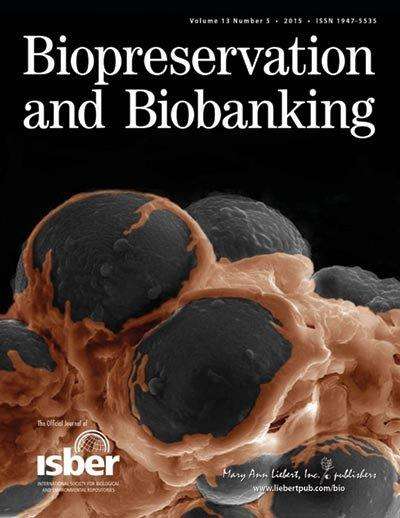New model for collecting high quality biospecimens for genomic analysis

A successful pilot study demonstrated the feasibility of a novel approach for collecting healthy post-mortem blood and tissue samples from hundreds of donors for use in gene expression analysis. This new biospecimen collection platform, which relied on partnerships with rapid autopsy and organ procurement organizations, can serve as a model for other future research projects, as described in Biopreservation and Biobanking.
Latarsha Carithers and coauthors from the National Cancer Institute, National Institutes of Health (NIH, Bethesda, MD), Leidos Biomedical Research, Inc. (Frederick, MD), and The Broad Institute of MIT and Harvard (Cambridge, MA), describe the biospecimen collection goals, methodology, challenges, and lessons learned in the article entitled, "A Novel Approach to High-Quality Post-Mortem Tissue Procurement: The GTEx Project". This article complements a series of manuscripts published earlier this year in Science and other journals that describe the initial molecular findings from the Genotype-Tissue Expression (GTEx) pilot study.
The GTEx Project, sponsored by the NIH Common Fund, is analyzing gene expression in normal, healthy human tissues to understand the effects of genetic variation. Participating researchers developed the methods and infrastructure for collecting, characterizing, and distributing tissue and cell line samples from healthy donors for analysis in the GTEx Project. Researchers can now request access to data and biospecimens from this valuable GTEx resource through the GTEx portal. Tissues from up to 45 different tissue sites from over 900 donors are available with corresponding clinical, demographic, handling, and pathological data. Also, whole exome and whole genome data from 450 donors, and RNA sequencing data from about 9,000 tissues are currently available, with future data releases planned to make genetic data from all GTEx donors accessible.
"The GTEx Project is a major NIH study that will provide valuable resources for researchers seeking to understand disease processes and develop treatments," says Editor-in-Chief Jim Vaught, PhD. "We are pleased that the authors chose to submit this important paper concerning the project's unique approach to biospecimen collection and processing to Biopreservation and Biobanking."
Research reported in this publication was supported by the National Institutes of Health under award numbers HHSN261200800001E, 10XS170, 10XS171, 10X172, 12ST1029, 10ST1035, HHSN268201000029C, and R01 DA006227-17.
More information: The article is available to download for free on the Biopreservation and Biobanking website.



















